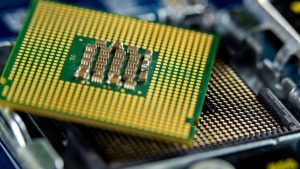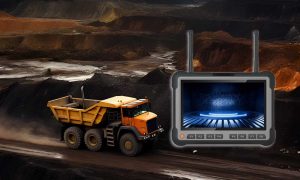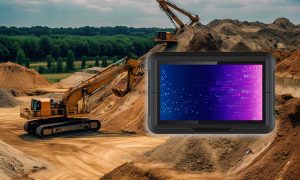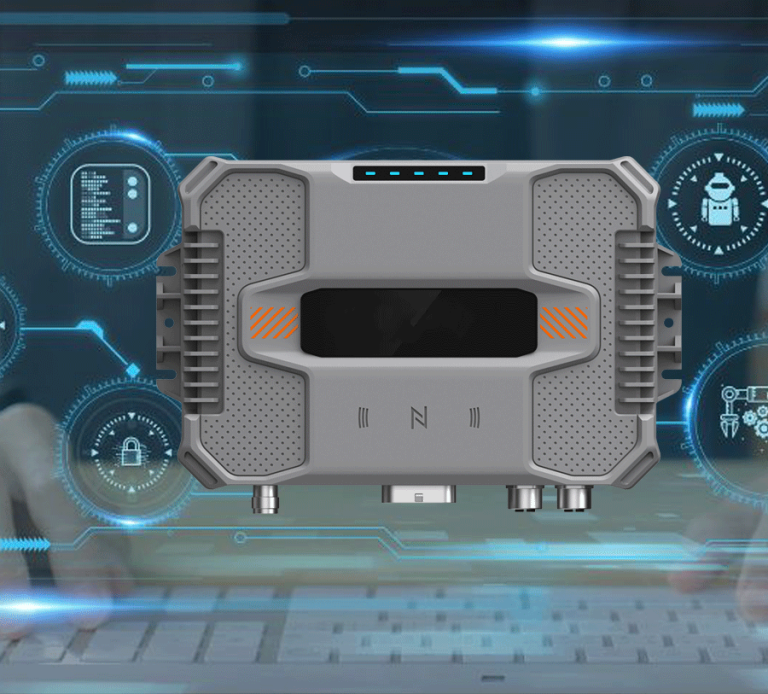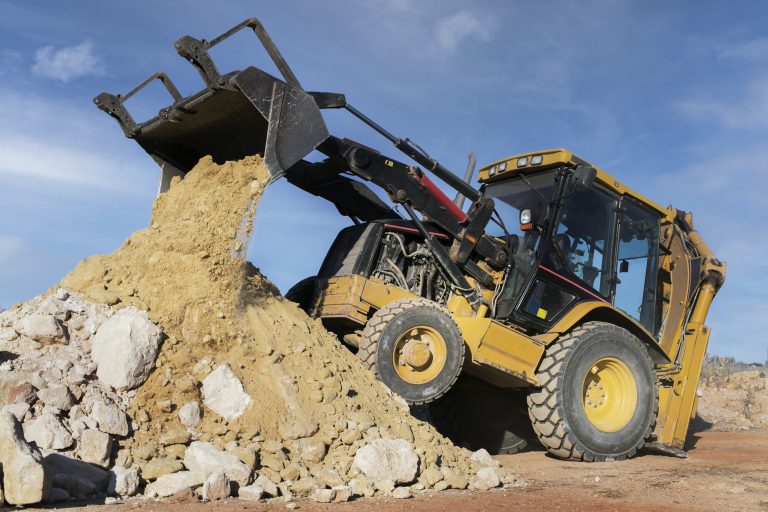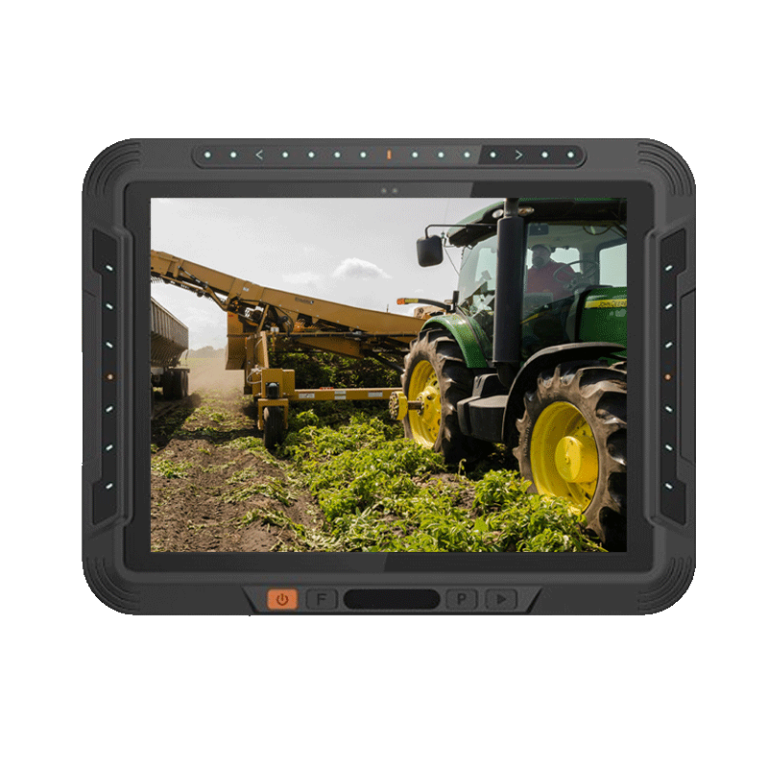In today’s mining industry, the use of advanced technology has become indispensable for improving efficiency, streamlining operations, and ensuring worker safety. Among these technological tools, the mining tablet has emerged as a vital asset, enabling real-time data collection, communication, and process management even in the harshest environments. However, with the growing reliance on mining tablets, one critical question looms large: How safe is the data stored and transmitted on these devices?
In an industry where sensitive information, such as geological data, operational plans, equipment diagnostics, and safety protocols, is constantly being shared, the security of data stored and transmitted on a mining tablet is of paramount importance. The consequences of data breaches or cyber-attacks can be disastrous, leading to financial losses, operational disruptions, and even safety hazards. This article will explore the various risks associated with data security on mining tablets, the key technologies used to protect data, and best practices for ensuring that sensitive information remains safe from unauthorized access or cyber threats.
Why Data Security on Mining Tablets Matters
Mining operations generate and handle vast amounts of data daily. From tracking equipment performance to monitoring worker locations, ensuring that this data is safely stored and transmitted is critical for several reasons:
1. Protection of Intellectual Property
Mining companies invest heavily in exploration and resource extraction. Geological data, extraction plans, and proprietary mining processes represent valuable intellectual property (IP). If such data is compromised or stolen, it can lead to significant financial losses and give competitors an unfair advantage. Ensuring that this data is secure on mining tablets is essential for safeguarding the company’s intellectual property.
2. Operational Integrity
Mining operations rely on real-time data transmission to coordinate logistics, manage equipment, and optimize production. Any disruption to the flow of information—whether through a cyber-attack or data corruption—can lead to operational delays, increased costs, and even safety risks. Protecting the data on mining tablets ensures the integrity of operations and minimizes the risk of downtime caused by data breaches or system failures.
3. Compliance with Regulations
The mining industry is subject to numerous regulatory requirements related to worker safety, environmental protection, and data privacy. Failure to secure sensitive data on mining tablets can result in violations of these regulations, leading to fines, legal liabilities, and damage to the company’s reputation. Data security measures are necessary to ensure compliance with industry standards and government regulations.
4. Protection Against Cyber Threats
As mining companies adopt more digital solutions, they become increasingly vulnerable to cyber-attacks. Hackers target industries like mining to gain access to critical data or disrupt operations through ransomware or other malicious activities. Ensuring that mining tablets are equipped with robust security measures helps prevent cyber threats from compromising sensitive information or causing operational disruptions.
Common Risks and Threats to Data Security on Mining Tablets
While the benefits of using mining tablets are clear, it is essential to recognize the security risks associated with these devices. Several potential threats can compromise the safety of the data stored and transmitted on mining tablets:
1. Data Breaches
Data breaches occur when unauthorized individuals gain access to sensitive data stored on mining tablets. This can happen through weak passwords, unencrypted storage, or malware attacks. In the mining industry, data breaches can expose confidential information such as resource locations, production plans, and proprietary technology.
2. Cyber-Attacks
Cyber-attacks, including ransomware, phishing, and malware, are a growing concern for mining companies. Hackers often target mobile devices like mining tablets because they are frequently used in the field, where security measures may not be as stringent as in an office environment. These attacks can disrupt operations, steal data, or demand ransom payments in exchange for unlocking encrypted files.
3. Loss or Theft of Devices
Mining tablets are often used in remote locations, making them vulnerable to being lost or stolen. If a mining tablet falls into the wrong hands, the data stored on it may be accessed unless strong security measures, such as encryption and remote wipe capabilities, are in place.
4. Man-in-the-Middle Attacks
When mining tablets transmit data over unsecured networks, they are at risk of man-in-the-middle (MITM) attacks. In these attacks, cybercriminals intercept the data being transmitted between the tablet and the central server, potentially stealing or altering the information. This can be particularly dangerous in mining operations where real-time data transmission is critical for decision-making and safety.
5. Unsecure Network Connections
Many mining operations take place in remote or underground locations where stable and secure network connections are not always guaranteed. Using public or unsecured Wi-Fi networks to transmit sensitive data increases the risk of interception by unauthorized parties. Without proper network security, mining tablets can become easy targets for cyber-attacks.
Key Technologies to Secure Data on Mining Tablets
To protect against these risks, mining companies must implement robust security measures that ensure data stored and transmitted on mining tablets is safeguarded. Several key technologies are used to enhance data security on these devices:
1. Encryption
Encryption is one of the most effective methods for securing data on mining tablets. It involves converting data into an unreadable format that can only be accessed with a decryption key. Even if a tablet is lost, stolen, or hacked, encrypted data remains inaccessible to unauthorized users.
There are two primary types of encryption used on mining tablets:
Data-at-Rest Encryption: This encrypts data stored on the tablet, ensuring that sensitive information is protected even when the device is not in use.
Data-in-Transit Encryption: This secures data as it is transmitted between the mining tablet and other devices or servers, preventing interception during transmission. Virtual Private Networks (VPNs) and Secure Socket Layer (SSL) encryption are commonly used to protect data-in-transit.

2. Multi-Factor Authentication (MFA)
Multi-factor authentication (MFA) adds an additional layer of security to the login process by requiring users to verify their identity using multiple forms of authentication. This could include a combination of something the user knows (password), something they have (security token), and something they are (biometric verification).
Implementing MFA on mining tablets significantly reduces the likelihood of unauthorized access, even if a password is compromised. For example, after entering a password, the user might be required to confirm their identity via a one-time code sent to their smartphone or by scanning their fingerprint.
3. Biometric Security
Biometric security features, such as fingerprint scanners or facial recognition, are increasingly being incorporated into mining tablets to enhance data protection. Unlike passwords, which can be forgotten, stolen, or guessed, biometric authentication relies on unique physical characteristics, making it a more secure and convenient way to protect sensitive data.
Biometric security can be particularly useful in mining environments where workers may need quick and easy access to their tablets while wearing gloves or protective gear. Fingerprint or facial recognition can allow for secure access without needing to enter a password manually.
4. Remote Wipe Capabilities
In the event that a mining tablet is lost or stolen, the ability to remotely wipe the device is crucial for preventing unauthorized access to sensitive data. Remote wipe capabilities allow IT administrators to delete all data from a device over the internet, rendering it useless to anyone who tries to access it.
This feature is particularly important for mining tablets used in remote or high-risk locations where physical security is harder to maintain. If a device is compromised, a remote wipe can be initiated immediately to protect the company’s data.
5. Mobile Device Management (MDM)
Mobile Device Management (MDM) software allows mining companies to centrally manage and secure all mining tablets used across their operations. MDM solutions provide IT administrators with the tools to enforce security policies, track device usage, monitor software updates, and ensure that all devices are compliant with the company’s security standards.
With MDM, mining companies can configure security settings remotely, lock down specific features or apps, and remotely wipe data from any compromised devices. MDM also provides visibility into how mining tablets are being used, enabling proactive management of potential security threats.
6. Secure Boot and OS Integrity
A secure boot process ensures that the mining tablet only runs software that is trusted by the manufacturer. This prevents malicious software or unauthorized modifications to the operating system (OS) from being loaded during startup. By verifying the integrity of the OS before booting, this feature helps to protect against malware that could compromise the tablet’s security.
Additionally, regular security updates and patches from the manufacturer are essential for maintaining the OS’s integrity and protecting against newly discovered vulnerabilities.
Best Practices for Ensuring Data Security on Mining Tablets
While technology plays a critical role in securing data on mining tablets, best practices in usage and management are equally important. Below are several best practices that mining companies should adopt to ensure the security of their data:
1. Implement Strong Password Policies
Weak or reused passwords are one of the most common security vulnerabilities. Mining companies should enforce strong password policies, requiring users to create complex passwords that are regularly updated. Passwords should never be shared, and employees should be trained on the importance of using unique passwords for different accounts.
2. Regular Security Training
All employees who use mining tablets should receive regular security training. This training should cover topics such as recognizing phishing attempts, avoiding malware, safely handling sensitive data, and understanding the company’s security protocols. Security awareness is key to preventing human error, which is often a weak point in data security.

3. Monitor Network Security
Ensuring that the networks used by mining tablets are secure is just as important as securing the devices themselves. Mining companies should use VPNs, firewalls, and intrusion detection systems to protect their networks from cyber threats. Public Wi-Fi networks should be avoided, and secure network connections should be enforced at all times.
4. Regular Software Updates
Keeping software up to date is essential for protecting against security vulnerabilities. Mining companies should ensure that all mining tablets are running the latest versions of their operating systems and applications, as updates often include important security patches. Automated update management through MDM solutions can help ensure that devices are always up to date.
5. Data Backup and Recovery Plans
Even with the best security measures in place, data breaches or system failures can still occur. Mining companies should implement regular data backup schedules and have recovery plans in place to minimize data loss in the event of an incident. Backups should be stored securely, either in the cloud or at off-site locations, and tested regularly to ensure they can be restored when needed.
Data security on mining tablets is a critical consideration for mining companies that rely on these devices to manage operations, monitor equipment, and ensure worker safety. With the increasing threat of cyber-attacks, data breaches, and device theft, mining companies must implement robust security measures to protect the sensitive information stored and transmitted on mining tablets.
Technologies such as encryption, multi-factor authentication, biometric security, and remote wipe capabilities provide essential layers of protection. Additionally, Mobile Device Management (MDM) solutions help companies maintain centralized control over all devices, ensuring compliance with security policies and enabling quick responses to potential threats.
By following best practices in device usage, network security, and employee training, mining companies can mitigate the risks associated with data security on mining tablets. In an industry where the integrity of data is vital for operational success and safety, investing in comprehensive data security solutions for mining tablets is not only prudent—it is essential for long-term resilience and success in the digital age.




